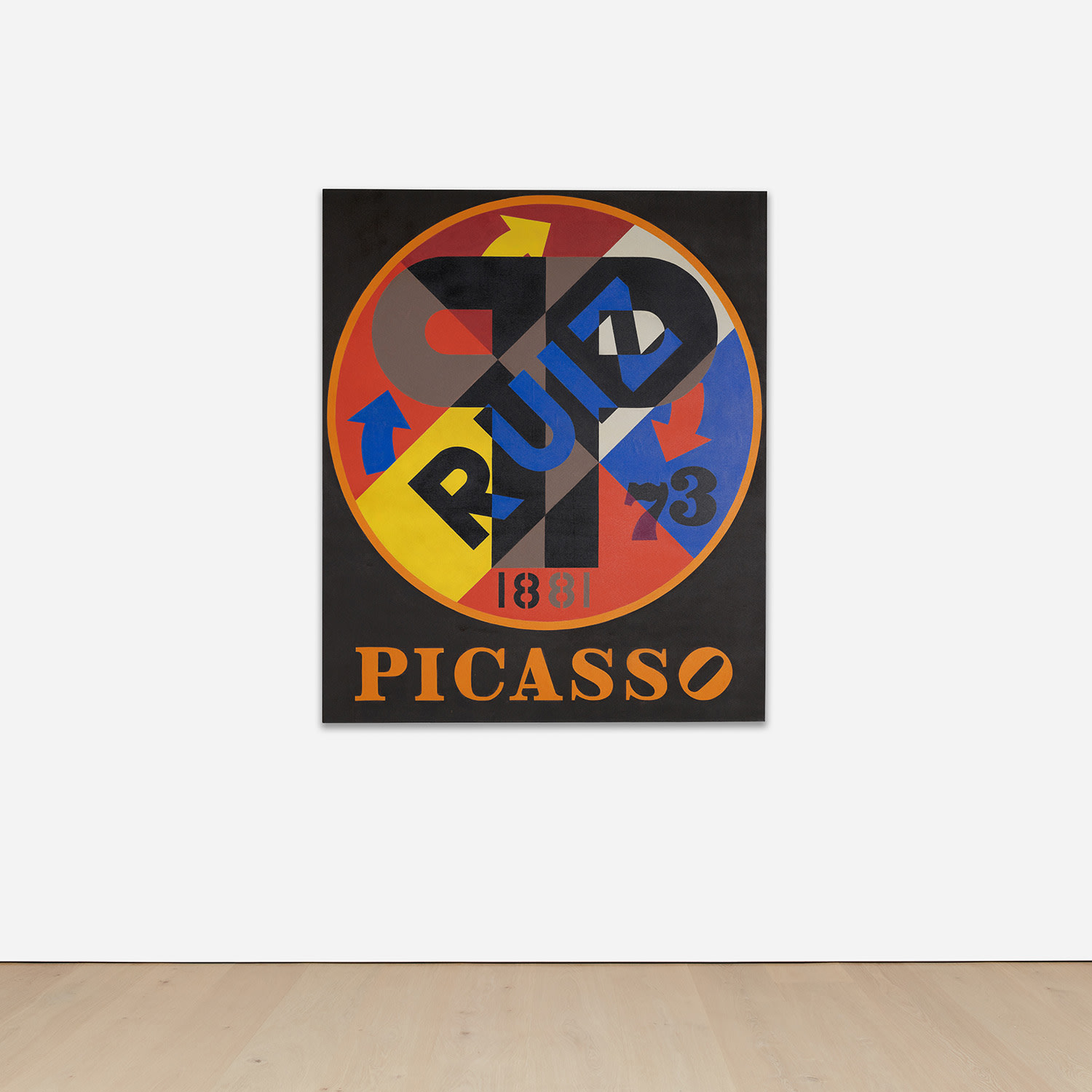



Property from a Private Collection, Florida
127
Robert Indiana
Picasso
stenciled with the artist's name, inscription and date "ROBERT INDIANA 2 NEW YORK SPRING 1974" on the reverse
oil on canvas
60 x 50 in. (152.4 x 127 cm)
Painted in 1974.